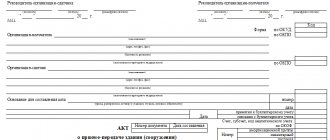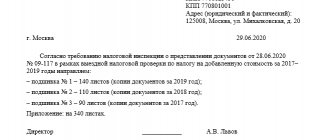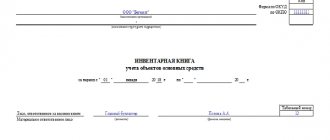The essence of economic development lies not only in the development and implementation of new technologies and systematic improvement of production. The daily economic activities of enterprises and organizations, private entrepreneurs - this is the main criterion. And any work is unthinkable without fixed assets, which are buildings, structures and, most importantly, equipment. After all, you must agree that it is impossible to make, for example, a car without using machine tools, to plow thousands of hectares of land without tractors, to collect millions of tons of grain without combines, etc.
Enterprises constantly sell and buy equipment, exchange it, donate it, rent it out, and manufacture it for their own needs. But all these actions need to be formalized somehow. For this purpose, there is a unified form OS-1, approved by Decree of the State Statistics Committee of the Russian Federation dated January 21, 2003 No. 7 and corresponding to the All-Russian Classifier of Management Documentation (OKUD) code 0306001. This is an act on the acceptance and transfer of fixed assets without taking into account buildings and structures. Enterprises, including those on the simplified tax system, actively use this particular form, although starting from January 1, 2013, it is not mandatory for use, because from that time on it is allowed to use forms of their own design (information of the Ministry of Finance of Russia No. PZ-10/2012 ).
The unified form OS-1 consists of three pages and is filled out either in two copies if a transfer and acceptance operation is carried out between different organizations, or in one copy when fixed assets are placed on the balance sheet of the enterprise, for example, upon purchase, and put into operation. The act is drawn up in all cases, except for the acceptance and transfer of groups of fixed assets, their acceptance and delivery after repair, reconstruction, modernization, or if a special accounting procedure is provided in accordance with current legislation.
Fixed assets - what are they?
Fixed assets include any property with which the company carries out its activities: equipment, machinery, inventory, materials, transport, instruments, etc. Buildings and structures are also fixed assets, just like raised livestock and some types of plants.
But those items or products that are in warehouses and are planned for further sale, as well as those that are in the transportation stage, are not considered fixed assets.
The purpose of the act in form OS-1
An act is drawn up when transferring an object of fixed assets (one or more) from an organization to another enterprise, in order to implement the terms of any agreement.
It does not matter who the parties to the transaction are: legal entities or individual entrepreneurs - the act must be drawn up regardless of this.
The creation of an act mainly pursues one goal: to record the fact of the transfer of fixed assets.
In addition, on the basis of this document, organizations register the transferred inventory items for accounting and put the property into operation.
The act of acceptance and transfer of fixed assets is an annex to the contract and in the future, in the event of any disagreements, it can become evidence in court on both sides.
To whom can material assets be transferred free of charge?
Both private and legal entities, as well as various institutions, can act as recipients of donations, including:
- Hospitals, treatment centers.
- Educational and educational institutions of various types.
- Social protection organizations.
- Charitable organizations and foundations.
- Scientific organizations.
- Museums, exhibitions.
- Religious and public organizations.
These points are spelled out in more detail in Article 124 of the Civil Code of the Russian Federation.
An important point: such organizations do not require anyone’s permission to accept a donation. This is clearly stated in the second paragraph of Article 582 of the Civil Code of the Russian Federation.
Thus, even a government agency has the right to accept donations in the form of material assets. It is important that this fact is correctly legally documented. Otherwise, the accounting department of the institution will have many unsolvable problems.
Is it necessary to create a commission?
As mentioned above, two organizations always participate in the acceptance and transfer of fixed assets. Moreover, in some cases, an entire commission is created to carry out the procedure and draw up the act.
This is usually necessary when the property (for example, equipment or instruments) has complex technical characteristics . To ensure that it is transferred in proper quality, working condition and without any breakdowns, defects or defects, third-party experts are sometimes included in the commission.
Is it necessary to compose?
It is necessary to draw up a form in the OS-1a form to document the fact of inclusion or exclusion of structures from the list of fixed assets.
The presence of the act proves the implementation of the transfer process to the acquirer and confirms the fulfillment of the obligations specified in the agreement for the acceptance and transfer of real estate.
Accounting staff also recalculate the organization’s property tax on the basis of this document.
If, upon acceptance of the building, non-compliance with construction standards was discovered, the violations must be recorded in the OS-1a act. A correctly executed form can serve as an evidence base in the event of a dispute between the parties to a transaction.
Reasons for preparation
The current legislation outlines a clear procedure for the acceptance and transfer of structures and buildings.
The acceptance of real estate is closely related to their commissioning.
Documents serving as the basis for the conclusion of a special commission on the commissioning of fixed assets:
- a signed purchase and sale agreement, the subject of which is the purchase of real estate, lease, other methods of transferring ownership (how to register fixed assets upon purchase);
- cash purchase and sale transaction;
- contract for the construction of a structure by contract method and its commissioning into operational activities.
- gift agreement upon receipt of the building free of charge;
- documents documenting the contribution to the authorized capital in the form of a structure.
The disposal process is formalized as a result of the sale, exchange, rental of premises with further purchase.
Key points when filling out form OS-1
The act applies to primary documentation, for which strict requirements have been abolished since 2013. Therefore, today, enterprises and organizations have every right to draw up a document in any form, use a template approved within the company, or fill out a previously mandatory standard unified form. The last option is convenient because it includes all the necessary information; you do not need to rack your brains over the structure and content of the document.
The required information in the act includes:
- creation date and number;
- details of enterprises;
- the name of the fixed asset, as well as everything related to its quality and quantity.
If the recipient of the property has no claims against the supplier, this must be noted; if such claims exist, they must be described in detail.
Table
The list of goods and materials required for the act of gratuitous transfer of material assets can be drawn up in the form of a table. In the sample available for download, this table contains several columns:
- Serial number of the name of the material value.
- The name itself.
- The number of units of goods of one name.
- The price of one transferred unit.
- The total amount of material assets transferred free of charge.
In official papers it is also customary to summarize tables. This paper is no exception. At the end of the table the total amount of transferred values should be indicated. If the exact figure is not known, you can use the average market value for a specific item.
What to pay attention to when drawing up a deed
Information can be entered into the document either on a computer (if an electronic form is available) or by hand (with a ballpoint pen, but not a pencil).
An important requirement that must be met: the presence of signatures of heads of organizations or representatives acting on their behalf (the use of facsimile signatures is unacceptable).
There is no strict need to certify the form using stamps, since from 2021 legal entities have the right to use seals and stamps in their work only on the condition that this norm is enshrined in their internal regulations.
The document is created in at least two copies (one for each party to the transaction), but additional copies can be made if necessary.
How many copies do you need?
When transferring previously used property to a new owner, 2 copies of the act are drawn up (1 for each party). The document is drawn up by the previous owner of the OS object.
Each copy of the acceptance certificate is subject to approval by the directors of both companies; proper technical documentation for the OS is attached to the certificate (registration certificate, construction plan, operating instructions).
Important! When registering the acceptance of new property, 1 act is drawn up for the receiving party.
If one of the parties to the transaction is a budgetary institution, there should be 3 copies of the document. Another package of documents is drawn up for the Federal Property Management Agency.
Signatures are affixed not only by commission members, but also by directors of state enterprises. The clause on state registration of rights is filled out only when transferring real estate.
Sample of registration of the act of acceptance and transfer of fixed assets
Filling out the first page of the act
- At the beginning of the document, space is allocated for its approval by the heads of the enterprises between which the acceptance and transfer of fixed assets takes place, indicating their positions and the date of approval.
- Next, enter data about the recipient organization: its full name, address, information about the current account and the bank in which it is opened. Similarly, information about the company that transfers the property is entered into the form.
- In the line “Grounds for drawing up the act” a link is given to the agreement - its number and date of creation.
- After this, two more dates are entered into the act: acceptance of the fixed asset for accounting and its write-off. This also includes the account number through which all actions with this property take place and its inventory, factory, and depreciation numbers.
- At the end of the registration of this part, the act is assigned a number, the date of its preparation is indicated, the name of the transferred property, the location of its actual location at the time of acceptance and transfer, and the manufacturing organization are written.
All other information is entered as needed.
Filling out the second page of the act
The second page of the act includes three tables:
- The first contains information about the condition of the fixed asset at the time of acceptance and transfer: date of release, commissioning, repair, actual time of use, amount of depreciation, residual value and purchase price under the contract.
- The second table includes information about the object as of the date of acceptance for accounting: cost, remaining useful life and method of calculating depreciation.
- The third table concerns some features of the property, including the presence of precious metals in it.
Filling out the commission decision and signatures of the parties
The next part of the document includes the date, as well as the results of tests of the transferred property and the conclusion of the commission present at the acceptance and transfer.
If there are any attachments to the document (for example, an expert’s opinion), this must be noted in a separate paragraph.
At the end, the act is signed by all members of the acceptance commission, as well as managers and chief accountants of enterprises.
Form and sample 2021
The form consists of 3 pages and looks like this:
A sample of filling out OS 1, which can be used as an example, is presented below. Here is a copy that is completed and intended specifically for the recipient. Accordingly, the deliverer enters information in those columns that are provided specifically for him.
Direct filling and signing depends on the characteristics of the object being transferred to the enterprise. If the production equipment is structurally simple and does not require any installation work, the act is signed immediately at the time of actual purchase. If assembly is required, then installation is carried out first, and only then the act is signed.








